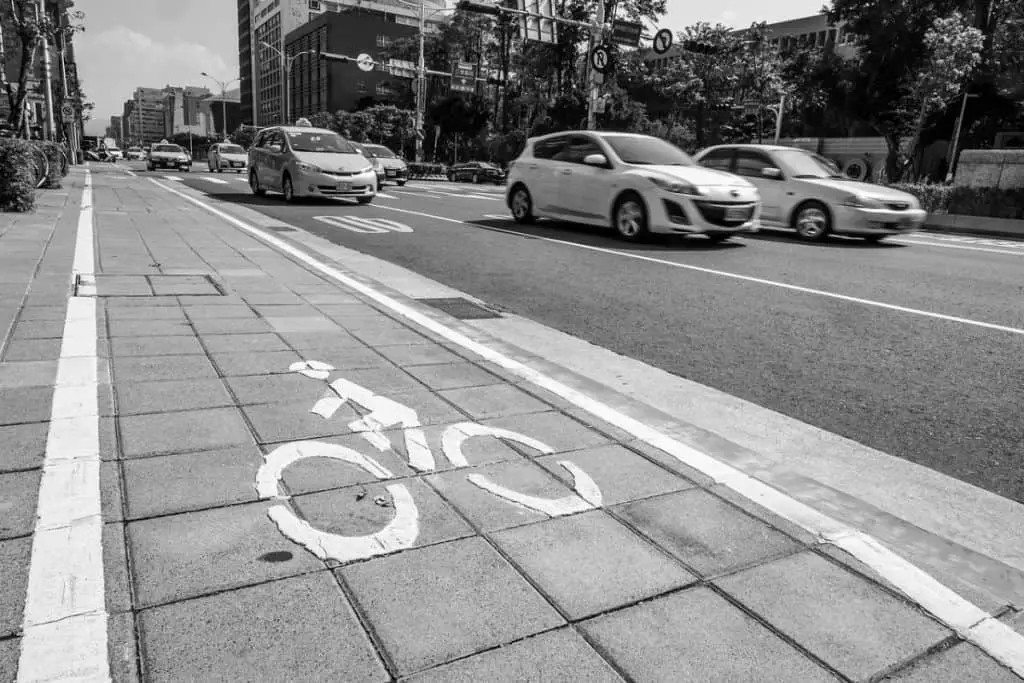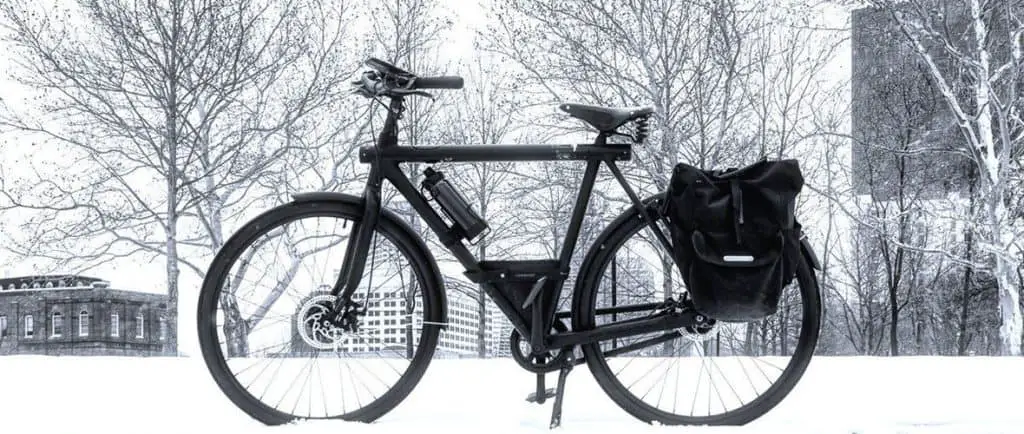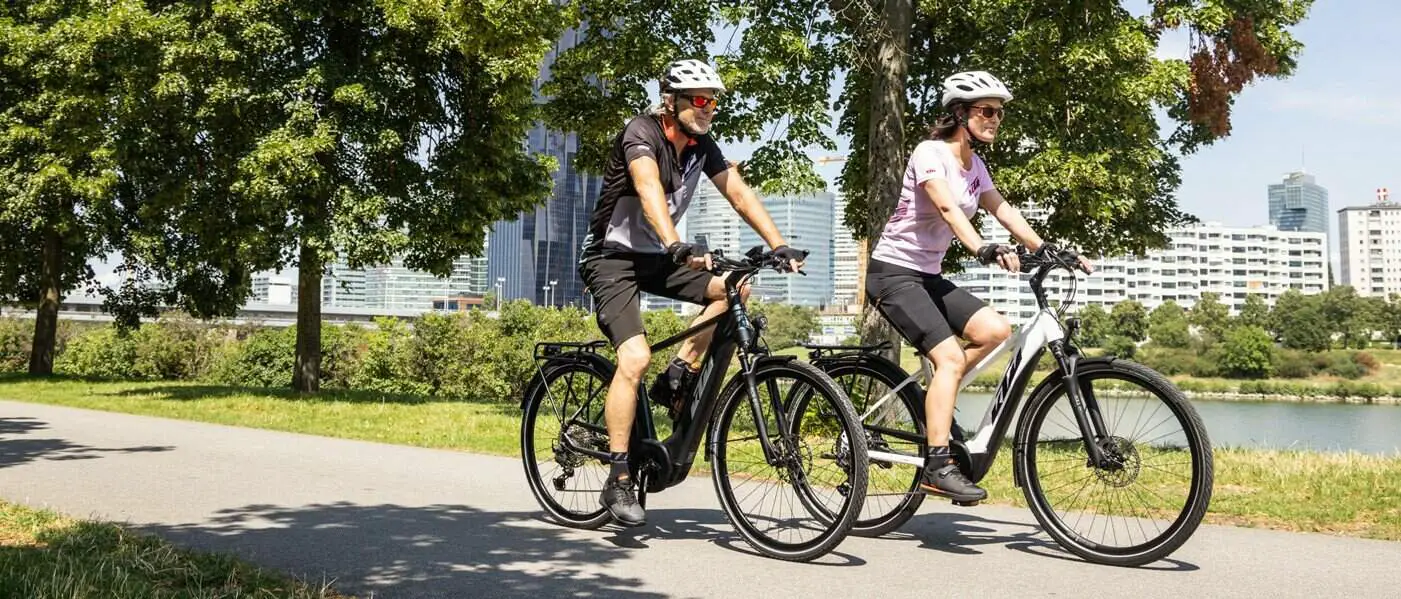Last Updated on July 19, 2023 by Igor Karni

Electric bicycles, also known as e-bicycles or e-bikes, are bicycles that are equipped with an electric motor and maintain the capacity to be pedaled by their rider (Wikipedia link).
You might be wondering, however, are e-bikes safe? How safe are they? While this is a legitimate concern with any sport, e-bikes are as safe as any other mode of transportation. Ultimately, there is always a risk when doing anything active. Still, if you observe the rules of the road, equipment, and personal safety, the risk levels of riding an e-bike are minimal.
This article will outline the potential concerns and safety issues that surround e-bikes, and will provide you with the answers you need to put you at ease before you ride!
E-bike road safety
Certain safety concerns surrounding e-bike are in regards to the lack of road laws currently associated with e-bikes. This is likely due to the fact that they are a fairly new classification of vehicles.
Depending on the motor that is used, e-bikes can reach up to 30 miles per hour (or 48 kilometers per hour).
Read also: What is the difference between a regular e-bike and a speed e-bike? And, is it legal to derestrict electric bicycle speed?
One of the road rule hazards, a problem that has been increasing in China in particular (source), is that riders using e-bikes typically still use bicycle lanes and are more likely to break road rules. Due to the faster speed and motorized nature of e-bikes, they travel faster than conventional bicycles and pedestrians, which increases the possibility of accidents.
Easy tip: For moderately priced e-bikes, check out these offers – Aventon e-bikes (Aventon website), Ride1Up e-bikes (Ride1Up website), Juiced e-bikes (Juiced website), or Swagtron e-bikes (Amazon).
In North America, Ontario Safety League President Brian Patterson says, “I don’t think today’s level of speed or this type of vehicle was envisioned when the discussions (regarding possible regulations) around e-Bikes started about 7 years ago (source).”
Patterson’s concern seems to stem from the fact that the popularity of e-bikes is growing much faster than Ontario’s laws can keep up with. Their accessibility, such as not needing a license to maneuver them, is a point of contention, as there is no screening process as to who is driving them.
Read also: Do you need a license to ride an e-bike? And, Do you need insurance to ride an e-bike?
Don’t be discouraged, though: just because e-bikes have the potential to be faster than traditional bicycles doesn’t mean they allow you to speed at hazardous levels. The maximum speed limit for most e-bikes, as mentioned before, is 30 mph (or 48 km/h) but some of them are programmed to have an even lower maximum.
Read also: How far can e-bikes go? What is e-bike range on a single charge? And, How fast are e-bikes?
Here are some tips regarding further safe practices according to the road safety rules:
Know your hand signals. If you don’t know the appropriate signal, especially when changing lanes, other vehicles and pedestrians will have no clue and potentially could put you at risk of an accident.

If you are unsure of your signals, take a look at, for example, this official Ontario Government document outlining the four major hand signals of bicycling (source);
Ride with traffic, not against it: this lessens your chance of being in harm’s way and/or being involved in a traffic accident;
Always obey traffic laws including lights, signals, and road signs that apply to traditional cyclists, cars, and other vehicles. Stay in the appropriate lane, using bike lanes when available. Cyclists tend to break the speed limit and red light laws.
This will only put you at risk of an accident. And this is a higher risk than for cyclists because your e-bike can travel faster than traditional bicycles. Do not cycle on the sidewalk/pavements as it can put both you and pedestrians at risk;
Be wary of everyone. E-Bike company AXcess states (source) that cars will not always realize how fast you are going and may assume that you are exponentially slower than them. To avoid the risk of accidents, always allow cars to get their right of way first, and do not rush. Be patient and alert, especially at intersections and turns.
E-bike equipment safety
When it comes to potential hazards with your e-Bike, you might be surprised to hear that what is perhaps the most major concern surrounding e-Bikes is not actually about the bike itself, but its batteries: in particular, lead and lithium-ion batteries.
These types of batteries must be shipped and disposed of with great caution and care, as they can lead to hazardous results in certain situations if not handled properly.

You must also make sure, especially in the winter when temperatures drop, that your battery is always above freezing temperature when you are charging it. E-bike company Pedego states that the battery cells may be harmed otherwise (source).
However, below-freezing conditions do not affect your battery when you are riding. Pedego also suggests that, when riding in rain or snow, you should try to avoid riding through slush or big puddles, as the water can get up into your gears and cause rust to form. As well, when it comes to charging your battery, be sure to charge your e-Bike in a dry setting.
Read also: Can electric bikes get wet? And, Can I ride an e-bike in winter?
You must also keep your tires inflated: you want your tire grip to be strong and reflexes to stay quick, allowing you better control and less chance to collide or be involved in an accident.
Be sure to check your tire tread often to make sure they aren’t worn out. This could happen more frequently with an e-bike than a traditional bicycle because of the extra weight and power on an e-bike.
E-Bikes are also heavier than traditional bicycles due to the fact that e-Bikes house a battery and a motor. According to Bicycling Magazine, this means you’re looking at around 20 pounds (10 kg) extra, so be sure to exercise extra caution when maneuvering, lifting, carrying, or moving your e-bike.
Read also: How heavy are e-bikes? And, Can an e-bike pool a trailer?
You’ll be happy to know that there is an excellent safety feature on e-Bikes: when you pull the brakes, the motor automatically stops spinning, making it a more efficient braking system than that of traditional bicycles.
Because of this feature, it is also easier to stop and go with an e-bike. And because of this, you are more likely to stop at stop signs and red lights since it requires less effort to get back up to speed.
You can also accelerate more quickly on an e-bike. This means that you are better able to control your speed whether you are going slow or fast. Less momentum is required, so it is easier to slow down and speed up.
E-bike personal safety
Practicing personal safety when it comes to riding an e-bike, just as you would when commandeering any other vehicle, is essential to riding safely.
According to Cycling Industry News (source), it is “just as safe to ride e-bikes as traditional bikes”. However, they note that if you are an elderly person (age 65+), there is a slightly higher risk of danger. But this risk applies to elderly persons riding regular bicycles as well.
Easy tip: Risks associated with e-Bikes are directly correlated to the speed and age of the rider as opposed to the bike they are using.
However, this statistic is relative: e-bikes are more appealing to people over the age of 65 due to their pedal-assist nature, making them more accessible. Therefore, there are more elderly persons riding e-bikes than traditional bicycles.

Cycling Industry News notes that the biggest struggle elderly persons face is with “getting on and off their bikes”. If you are an elderly person riding an e-Bike, be sure to exercise necessary caution with your speed as well as when mounting and dismounting.
To further help you prepare for riding your e-bike safely, here is a list of personal safety tips:
Always wear a helmet to protect your head, as you would do if riding a traditional bicycle. Wearing a helmet reduces the chance of head injury by 50 percent, with a reduction of neck and face injury by 33 percent;
Get rear-facing mirrors for your e-bike in order to better see what is behind you, keeping you more aware of traffic and vehicles around you. Cars are becoming more “quiet”, making it harder to know when they are behind you and how close they are. So, having mirrors takes a large chunk of the risk out of the equation;
Stay visible. It is imperative that you and your e-bike are clearly visible to drivers, pedestrians, and anyone else on the road at all times. This means you should get lights and reflectors on your e-bike, an especially important feature if you are riding at night.
Install blinking lights. E-Bike company ProdecoTech suggests that at the bare minimum you should be getting a blinking white light for the front and rear red light for the back of your bike.
The addition of lights and reflectors will massively lessen the odds of you getting hit by a vehicle, as you are heightening the chance of them seeing you. You should also wear bright/neon/reflective clothing to further heighten your chance of being seen;
Do not wear baggy clothing. Extra material has the risk of getting caught on your wheels or pedals. Also be sure that your shoes, whether they have laces, buckles, zippers, or Velcro, are properly fastened before riding, to avoid any risk of getting caught in your e-bike’s wheels or pedals;
- Never ride when feeling dizzy, or unwell, or after alcohol;
- Never text or use your phone while riding;
- Invest in a bell to warn pedestrians and air horn for warning cars.
Once you have observed all of these rules, you are ready to . . .
E-Bike your heart out!
As you can see, the risks of riding an e-bike are low as long as you are a cautious rider and you follow the basic rules of road safety, personal and equipment safety.
So remember: if you decide to purchase an e-bike or convert your traditional bicycle into one, just be alert and cautious.
Read also: Can traditional bicycles be converted into e-bikes? And, How fast do e-bikes lose value, depreciate?
Exercising common sense and abiding by your place of residence’s road laws and speed limits, understanding your equipment, practicing personal safety, and knowing how to avoid any potential hazards will result in a safe and happy e-biking experience.
Igor is a sustainable mobility and green energy advocate. His mission for Easy E-biking is to help make electric cycling simple, practical, and fun. Follow him on Facebook and LinkedIn.




